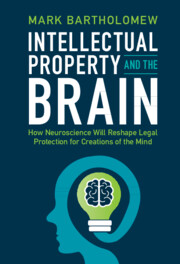 Intellectual Property and the Brain
Intellectual Property and the Brain Book contents
- Intellectual Property and the Brain
- Intellectual Property and the Brain
- Copyright page
- Contents
- List of Figures
- Acknowledgments
- Introduction
- Part I The Law and Neuroscience of Creative Activity
- Part II Understanding Audiences for Art and Advertising
- Part III Using Neuroscience to Improve Intellectual Property Law
- 6 How to Take Creativity Seriously
- 7 Know Your Audience
- 8 Advertising, Fast and Slow
- Conclusion
- Index
6 - How to Take Creativity Seriously
from Part III - Using Neuroscience to Improve Intellectual Property Law
Published online by Cambridge University Press: 14 July 2022
- Intellectual Property and the Brain
- Intellectual Property and the Brain
- Copyright page
- Contents
- List of Figures
- Acknowledgments
- Introduction
- Part I The Law and Neuroscience of Creative Activity
- Part II Understanding Audiences for Art and Advertising
- Part III Using Neuroscience to Improve Intellectual Property Law
- 6 How to Take Creativity Seriously
- 7 Know Your Audience
- 8 Advertising, Fast and Slow
- Conclusion
- Index
Summary
This chapter details what a better understanding of the creative process should mean for copyright law. Instead of continuing to avoid any rigorous analysis of creativity, courts should investigate authorial motivation and solicit expertise to help diagnose the presence of the required “creative spark.” These changes would bolster copyright’s role in incentivizing the production of creative works while avoiding awards of copyright to unoriginal artworks. The chapter also explains how to recalibrate design patent law in light of what we understand about audience perception of design. The trier of fact should examine whether a design choice makes the design easier or harder for audiences to process. Design choices to be simpler, more prototypical, or more congruous are already likely sufficiently rewarded by consumer choices in the marketplace and should be presumed to lack the originality needed for design patent protection. Through a series of visual examples from actual design patent cases, the chapter explains how, by analyzing the effect of a design choice on visual processing fluency, courts can stop treating all design differences the same.
- Type
- Chapter
- Information
- Intellectual Property and the BrainHow Neuroscience Will Reshape Legal Protection for Creations of the Mind, pp. 127 - 152Publisher: Cambridge University PressPrint publication year: 2022


